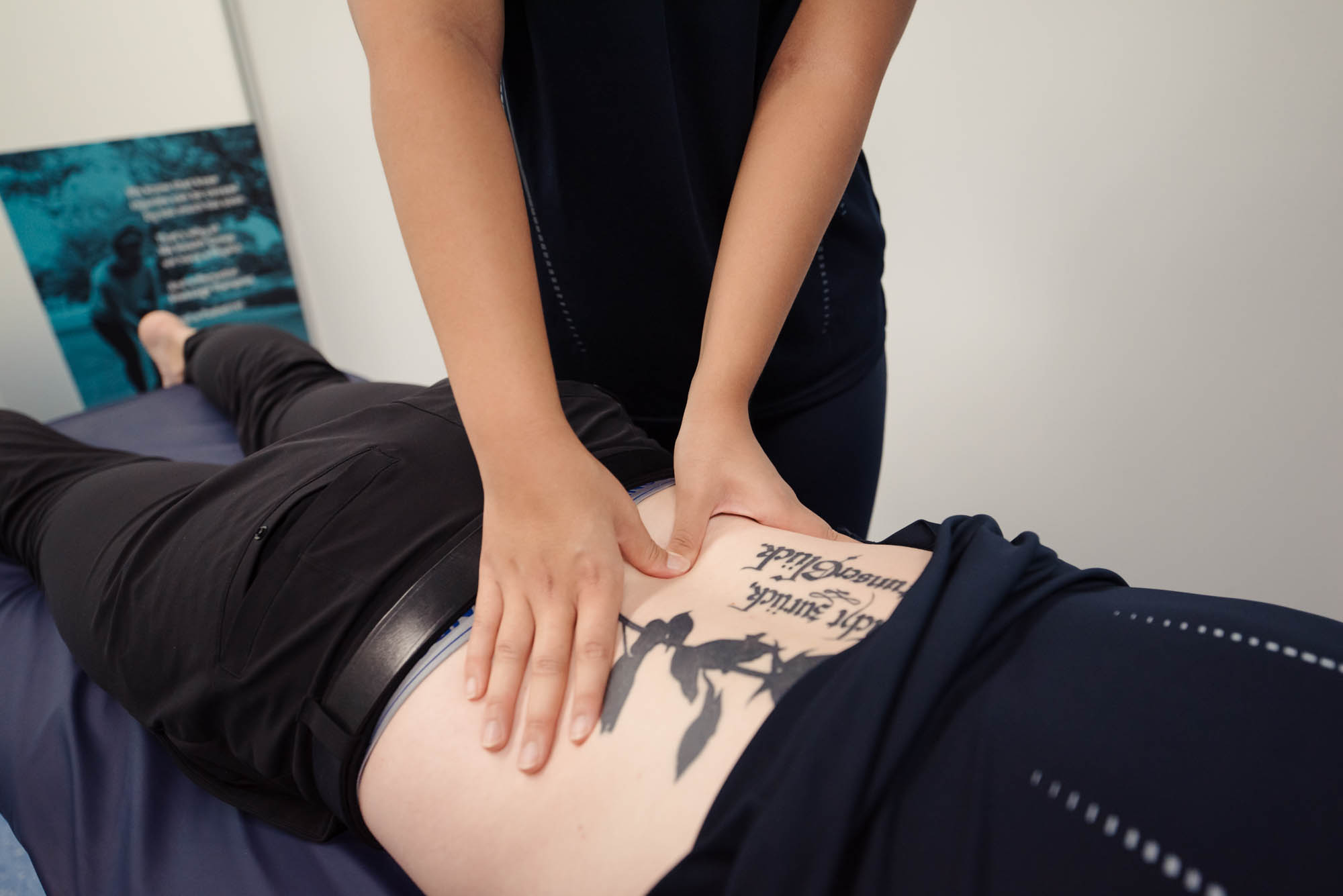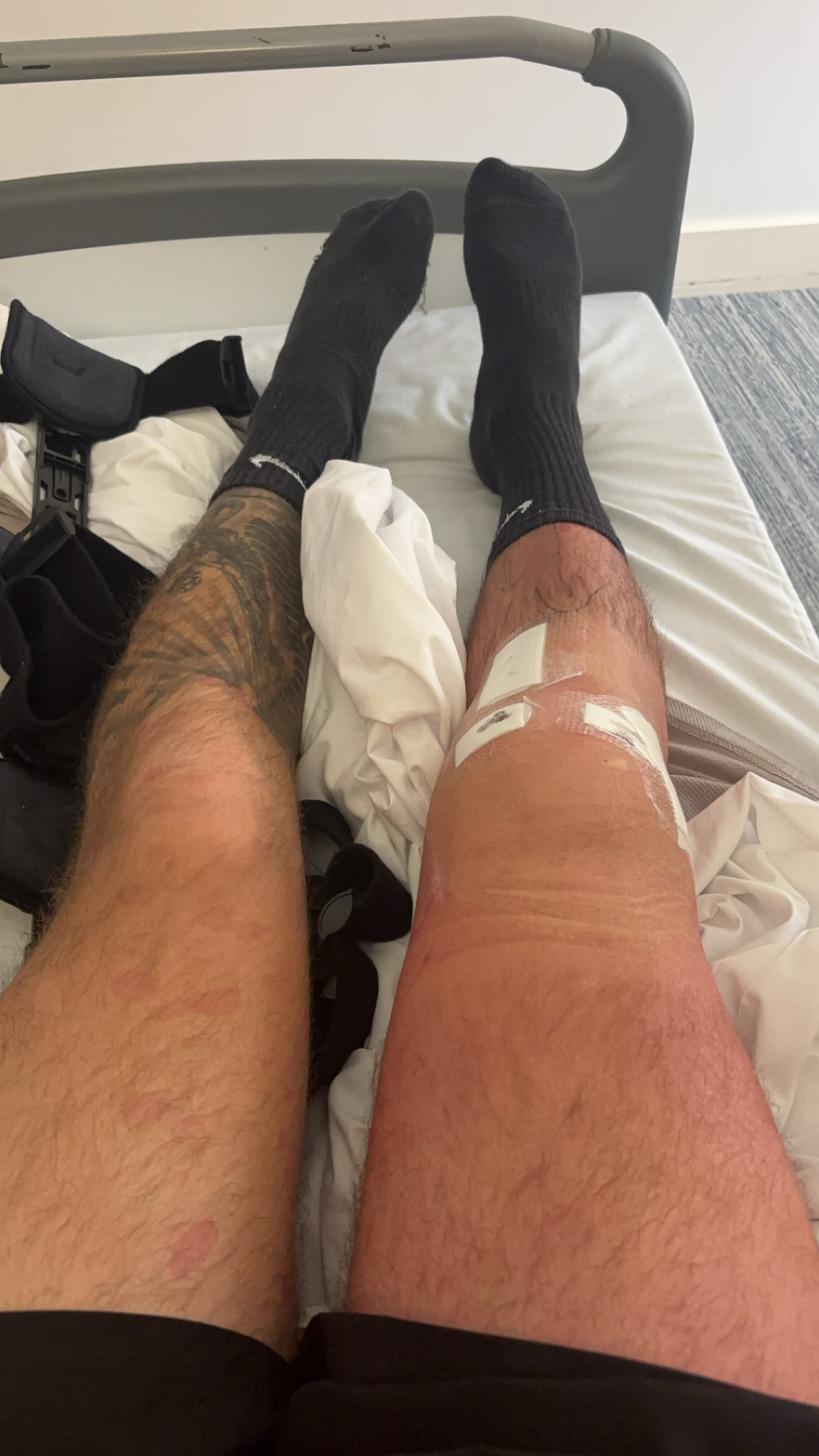Back pain from a pulled muscle or spasm can feel intense, but it doesn’t have to side-line you for long. In this guide, Reuben, our senior physiotherapist, explains the difference between muscle strains and spasms, how to tell what’s really going on, and when physiotherapy can help. You’ll learn practical steps to ease pain, support healing, and avoid making things worse.
Table of Content
What to do if you have a muscle spasm or strain?
Physiotherapy for pulled muscles and spasms
When to see a physiotherapist?
Introduction
Back pain is incredibly common, and often, it's caused by something as simple yet painful as a pulled muscle. Whether it occurs during exercise or lifting something unexpectedly heavy, a pulled back muscle can be frustrating and sometimes feel scary.
But how do you discern if your back pain is a muscle strain? And, more importantly, how can you find relief?
Signs of a pulled back muscle

Back pain has many names—“pulled muscle,” “muscle strain,” “muscle spasm,” and just plain “back pain.” However, when used on the internet or with friends/family, these terms generally just describe discomfort in the lower back area.
A true pulled or strained muscle occurs when muscle fibres overstretch or tear. Imagine a football player forcefully kicking a ball or sprinting at full speed, suddenly straining their hamstring. Typically, muscle tears happen when the muscle is placed under high loads, causing immediate pain. Often, noticeable bruising appears afterwards, due to bleeding within the muscle from the injury [1].
Muscle tears range from grade 1 (minor, involving only a few fibres) to grade 4 (complete muscle rupture). In the lower back, grade 1 tears are most common, while grades 2–4 are very rare and usually involve intense sports/gym activity [1].
In my 11 years as a physiotherapist, bruising accompanying acute lower back injuries is extremely uncommon unless there’s direct trauma (perhaps a fall or being tackled, for example). However, a suspected grade 1 strain can still cause severe pain in the lower back (even 10/10), primarily due to protective muscle spasms [3].
It can be important to distinguish between muscle spasms and muscle strains:
- Muscle spasms occur when muscles contract painfully or tense up to prevent spine movement. It’s the body’s protective response triggered by perceived threats such as doing something you’re unaccustomed to.
- Muscle strains typically happen during physical exertion, such as lifting heavy objects (15–20 kg or more).
If your back pain doesn’t follow heavy lifting or strenuous activity or persists beyond typical healing timeframes (most healing occurs within 12 weeks), you might be experiencing a muscle spasm rather than a strain [7].
Understanding muscle spasms
Muscle spasms can be intensely painful, lasting days, weeks, or even months, and often flare up during periods of stress, poor sleep, anxiety, or unfamiliar movement [3]. In these times, your nervous system becomes hyper-sensitive, so even minor challenges can feel threatening and trigger protective muscle tension (and sometimes inflammation) that becomes painful, even without tissue damage [4].
Psychological factors (stress, fear of movement, unhelpful beliefs) and social pressures (workload, lack of support) can amplify your brain’s “threat radar,” increasing sensitivity and slowing recovery [5].
Interestingly, the inverse can also occur—people sometimes sustain significant injuries yet feel little or no pain because their brain does not register them as threatening. You may have seen an unexplained bruise on your body, or heard of someone discovering a broken bone only when an unrelated X-ray was taken. For a fascinating deep dive into this mind–body paradox, watch:
Most back injuries involve both physical and psychological drivers. A skilled physiotherapist will use targeted questions and simple tests to identify which factors are at play—and help you develop a clear, comprehensive plan to manage them.
What to do if you have a muscle spasm or strain?

It’s often helpful to ask yourself:
- Was your activity intense or demanding enough to exceed your tissues’ capacity? (e.g., lifting something very heavy or moving awkwardly under significant strain). This will differ depending on your usual capacity; lifting 60kg from the ground may sound heavy, but not if you’re a powerlifter who usually lifts 200+ kg from the floor.
- Did the pain come on suddenly, suggesting an acute overload, or develop gradually after the event?
Understanding whether the load was high enough to challenge or exceed what your body is prepared to handle can help differentiate between a sudden strain and a protective muscle spasm (they can also occur together to complicate things further!).
If it’s likely a muscle spasm, the best approach is to stay calm, gently move, and reassure your body that there’s no significant damage.
Research shows that providing reassurance, staying active, and gradually returning to regular routines—rather than resting excessively—can significantly reduce recovery time and prevent persistent pain [2, 8–10]. Activities like gentle movement, deep breathing exercises, relaxation techniques, and maintaining regular daily activities can help. If you’re uncertain or are struggling to manage, it would be beneficial to consult a health professional.
If you suspect you’ve pulled a back muscle, you have options: you can stay calm, carry on, and allow natural healing to improve your symptoms. Or, if you’re concerned and feel professional help would be beneficial, continue reading below to find out how physiotherapy can empower you to take control of your recovery.
Physiotherapy for pulled muscles and spasms
.png?width=3872&height=2592&name=Burswood_Dry-Needling%20(1).png)
The good news is you don’t need to endure pain or recover alone. Physiotherapy offers a safe, effective, non-invasive way to treat back pain and support your recovery.
Here’s how high-quality physiotherapy can help:
- Accurate Assessment [2, 10]
A physiotherapist will carefully evaluate your story for signs and symptoms to determine if your pain stems from a muscle issue or another structure (e.g., disc, joint, or nerve). They’ll also guide you toward appropriate medical care or imaging if necessary. Your assessment will also investigate beliefs, behaviours, or mood to gauge whether they contribute to your problem. - Pain Relief Techniques [11-13]
In addition to exercise and education, gentle massage, dry needling, or heat therapy can significantly reduce pain and muscle tension. In many cases, targeted movement retraining can immediately ease pain. - Stretching and Strengthening [12]
Your physiotherapist may prescribe specific stretches and strengthening exercises tailored to your injury. This may help address the issues involved and prevent future episodes. - Posture and Movement [2, 3]
Posture, movement patterns, or protective behaviours can be contributing factors to back pain. A skilled physiotherapist can identify these issues, educate you about your condition, and help you make beneficial changes to address pain and prevent future injuries. - Individualised Recovery Plan [2, 3]
Lower back pain can be specific to your body, lifestyle, and circumstances. Hence, a plan which is tailored to your specific needs can ensure that you recover more effectively and faster. - Education [4, 7]
One of the most valuable roles a physiotherapist can play is in education—helping you make sense of your symptoms, understand what’s safe to do, and build confidence in your body. This kind of support reduces fear and empowers you to take an active role in your recovery.
When should you see a physiotherapist?

Most acute back pain improves significantly within 6–12 weeks with education, reassurance, and gradual return to normal activities [5, 11]. Early self-management—such as gentle movement, maintaining daily routines, and addressing unhelpful beliefs—supports natural healing and prevents persistent pain [5, 8].
You should seek professional advice promptly if you experience any of the following:
- Persistent or progressive neurological symptoms (e.g., pins and needles in both legs, muscle weakness)
- Bowel or bladder dysfunction (e.g., urinary retention, incontinence)
- Severe, unremitting night pain or unexplained weight loss
- Intense uncertainty or anxiety that prevents you from moving
A physiotherapist can provide focused assessment, targeted treatment, and tailored education to address your pain’s physical and psychosocial drivers. Early assessment can help you recover more quickly and confidently if in doubt.
Need Support for Back Pain?
At our Burswood clinic, our experienced physiotherapists provide expert care to relieve your pain and help you move comfortably again. Whether your issue is recent or ongoing, we’re dedicated to guiding you through recovery every step of the way.
Book your initial consultation today in 60 sec and let’s get you back to feeling your best.
References
- Brukner P, Khan KM, Bahr R, Blair S, Cook JL, Crossley K, et al. Clinical sports medicine: Foundations of clinical practice. 6th ed. McGraw Hill; 2024.
- Australian Commission on Safety and Quality in Health Care. Low Back Pain Clinical Care Standard. Sydney: ACSQHC; 2022.
- O’Sullivan PB. Cognitive functional therapy: An integrated behavioral approach for the targeted management of disabling low back pain. Phys Ther. 2016;96(5):700–11.
- Moseley GL, Butler DS. Explain pain. 2nd ed. Noigroup Publications; 2015.
- National Institute for Health and Care Excellence. Low back pain and sciatica in over 16s: Assessment and management [Internet]. NICE guideline (NG59); 2016.
- Moseley L. Why things hurt [Internet]. TEDxAdelaide; 2014 Nov [cited 2025 May 13]. Available from: https://www.ted.com/talks/lorimer_moseley_why_things_hurt
- Lin I, Wiles L, Waller R, Caneiro JP, Nagree Y, Straker L, et al. Patient-centred care: The cornerstone for high-value musculoskeletal pain management. Br J Sports Med. 2020;54(21):1240–2.
- Traeger AC, Hübscher M, Henschke N, Moseley GL, Lee H, McAuley JH. Effect of primary care-based education on reassurance in patients with acute low back pain: Systematic review and meta-analysis. JAMA Intern Med. 2019;179(6):733–9.
- National Institute for Health and Care Excellence. Low back pain and sciatica in over 16s: Assessment and management [Internet]. NICE guideline (NG59); 2016.
- Australian Physiotherapy Association. Management of low back pain [Internet]. Clinical framework; 2020. Available from: https://australian.physio/sites/default/files/low_back_pain_framework.pdf
- Lin I, Wiles L, Waller R, Goucke R, Nagree Y, Gibberd M, Straker L, Maher CG, O’Sullivan PP. What does best practice care for musculoskeletal pain look like? Eleven consistent recommendations from high-quality clinical practice guidelines: systematic review. British journal of sports medicine. 2020 Jan 1;54(2):79-86.
- National Health and Medical Research Council. Evidence-based management of acute musculoskeletal pain (including back pain). NHMRC; 2018.
- Qaseem A, Wilt TJ, McLean RM, Forciea MA; Clinical Guidelines Committee of the American College of Physicians. Noninvasive Treatments for Acute, Subacute, and Chronic Low Back Pain: A Clinical Practice Guideline. Ann Intern Med. 2017;166(7):514–530.







